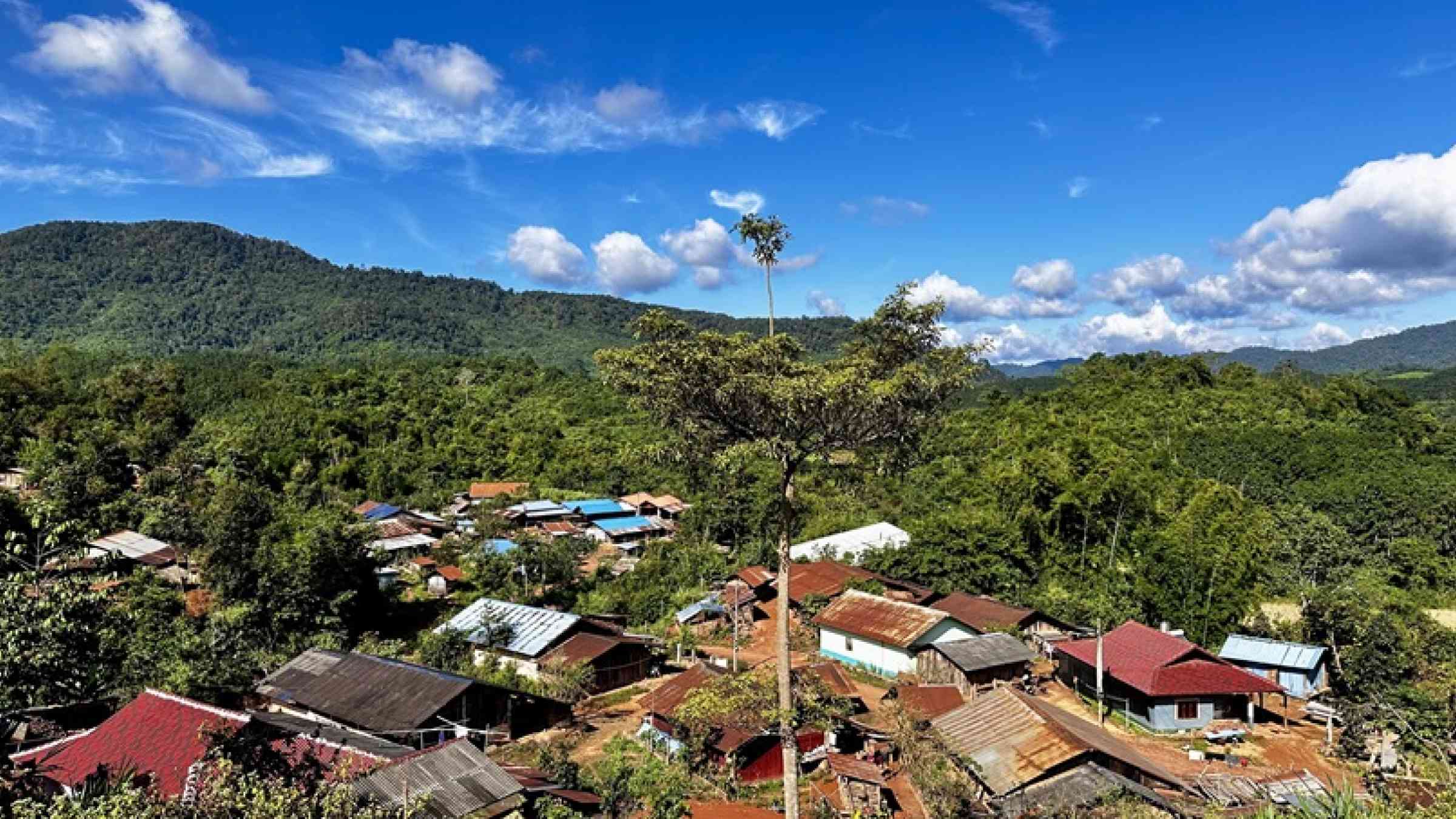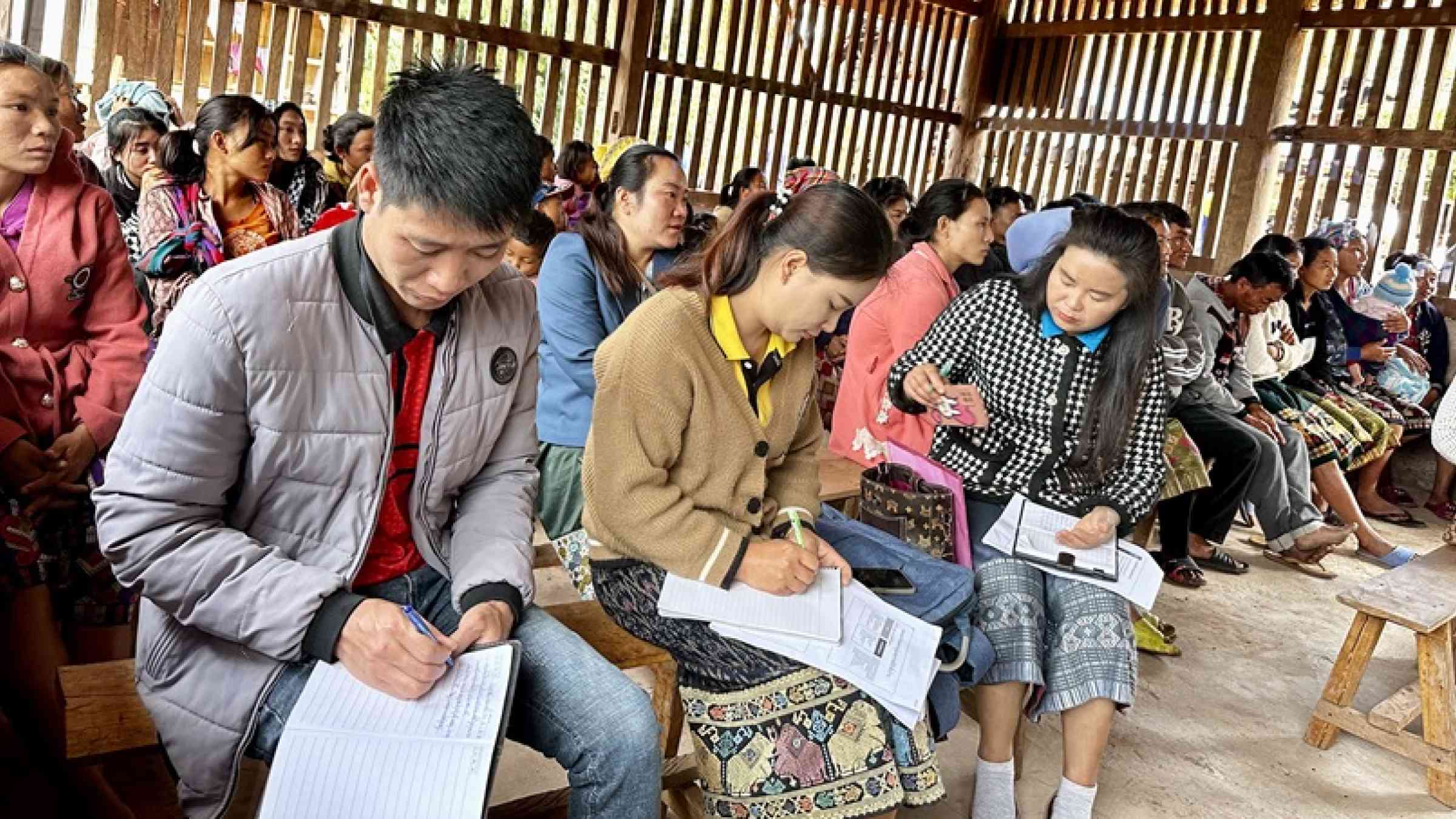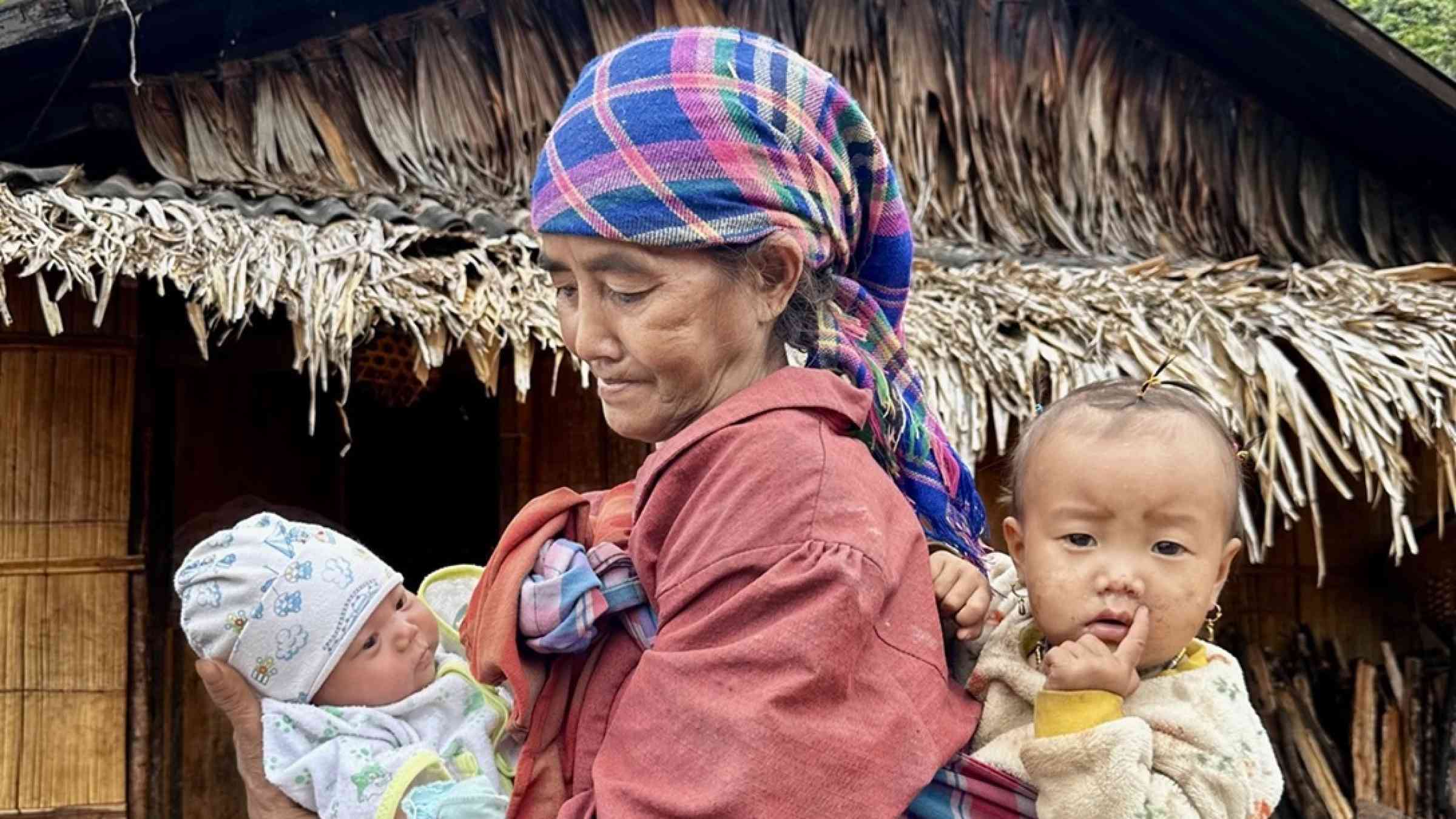Community-led disaster management: Soulinh’s path to resilience

"We, the villagers of Soulinh Village, gathered to discuss potential disasters that could impact our lives and livelihoods," explained Mr. Phantamin, Chair of the Village Disaster Management Committee in Soulinh, a village in Phongsaly, the northernmost province of Lao PDR. "Together, we developed a comprehensive disaster risk management plan to reduce risks and ensure an effective response in case of a disaster."
Under Mr. Phantamin's leadership, the villagers participated in a series of training sessions on community-based disaster risk management, supported by the UN Office for Disaster Risk Reduction (UNDRR) and the World Food Programme (WFP). They learned about the various stages of the disaster management cycle, assessed the hazards and vulnerabilities present in their village, and developed strategies for risk reduction, preparedness, and response.

The village disaster management committee, comprising six dedicated members, played a crucial role in raising awareness about disaster risks among the community, with support from the district authorities. Each member took charge of a specific unit, such as information dissemination, evacuation, rescue operations, loss and damage assessment, and aid distribution.
Proactive measures follow the assessment
Having recognized that locust infestations, droughts, and animal epidemics posed significant threats to their livelihoods, the villagers identified proactive measures, including preparedness and response activities, in the village disaster risk management plan to cope with the potential impact.
With the leadership of the committee and supported by the World Food Programme (WFP), the villagers established a community rice bank in a safer area to serve as a local safety net during the lean season and disasters. Moreover, they adhered to traditional practices, such as storing grains in a separate hut away from the main village, to mitigate the risk of fire emergencies. The committee has also installed loudspeakers that can be used to make early warning announcements during emergencies.

To prioritize assistance, the villagers identified the most vulnerable households based on criteria such as the level of poverty, the number of female-headed households, households with orphans, elderly, persons with disabilities, and families that do not have sufficient food throughout the year.
By aligning their preparedness efforts with the identified hazards and the village's capacity, the community aimed to reduce disaster risk, safeguard their assets, minimize losses and damages, and ultimately preserve lives. The inhabitants of Soulinh Village have strengthened their community against disaster risks and paved the way for a resilient future.
This UNDRR and WFP initiative was backed by the Ministry of Labour and Social Welfare and provincial and district authorities of Lao PDR, and financed by the Climate Risk and Early Warning Systems (CREWS) initiative and USAID's Bureau for Humanitarian Assistance. In 2023, the support covered 15 villages in Nhot-Ou and Phongsaly districts, where 27 government staff (nine women) were trained in community-based disaster risk reduction planning and facilitation, and 782 villagers (178 women) benefited from disaster risk reduction and preparedness.